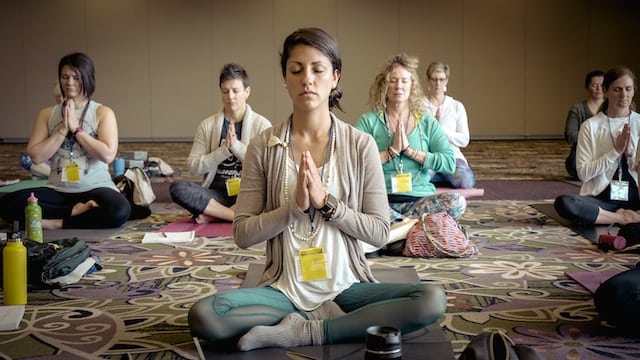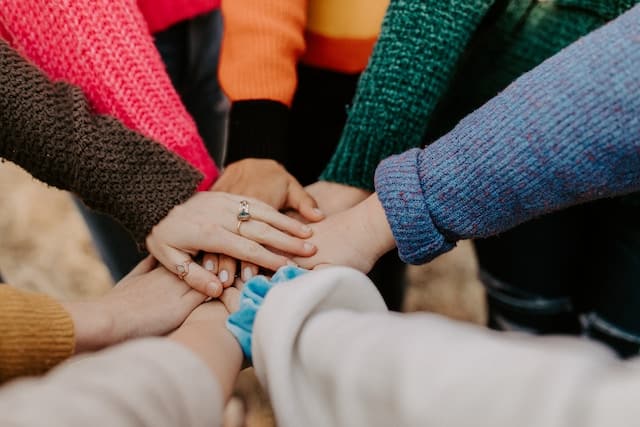Embarking on a journey of personal development and healing in a group setting can be incredibly powerful. Group therapy activities offer unique opportunities for participants to connect, share their experiences, and learn from each other.
This guide dives into 35 motivational activities designed to build trust, improve communication, and build a sense of community among group members. Each activity is thoughtfully curated to encourage members to participate, enhance self-awareness, and promote positive change.
Whether you’re a seasoned therapist or a newcomer to group facilitation, this guide provides practical tools and inspiration to energize your group sessions and make a lasting impact on participants’ lives.

Key Takeaways
- Group therapy activities offer unique opportunities for participants to connect, share their experiences, and learn from each other
- Creating a safe and supportive environment in group therapy sessions is paramount
- Participating in group therapy activities yields numerous advantages for individual well-being and communal growth
35 Examples of Motivational Group Therapy Activities
- Positive Speculating: One person sits in front of the group and isn’t allowed to say anything. The other group members speculate about the positive characteristics and attitudes of this person. Even if they don’t know the person, they should just speculate from the first impression. They are not allowed to say something negative! Just positive things. One person is the writer and writes everything down and at the end hands the large piece of paper to the person in front. After five minutes it rotates and another person goes in front. This fun role-playing game
- Share Your Fears: Group members write down their fears or anxieties anonymously. These are then read out loud to the group, fostering understanding and empathy among members
- The Guest House Poem: Participants reflect on the poem’s message (The Guest House by Jelaluddin Rumi) about welcoming all emotions emphasizing that even unpleasant feelings have value and are fleeting.
- The Passengers on a Bus Metaphor: Group members are asked to imagine themselves as bus drivers and their thoughts as passengers that come and go. They’re asked to explain to envision what types of passengers frequently come on their bus, when they arrive, the types of things to say and when they leave. The exercise aims to help members to observe their thoughts without judgment.
- Sensory Awareness: Any tasks that help group members become more aware of their senses encourage mindfulness and emotional regulation. The most group common sensory awareness tasks involving creating art as a team.
- Positive Reminiscence: Group members share positive memories from their past. Participants should be encouraged to get into great detail about how they were feeling during these moments.
- Gratitude by Mental Elimination: Participants imagine their life without certain positive aspects. They can take it turns to describe what this life might be like. This exercise aims to enhance gratitude for the smaller pleasures of life.
- The Self-Compassion Pause: Participants are taught to practice self-compassion in response to negative self-talk. This habit can be developed by taking it in turns to relive moments of high stress, then practicing deep breathing and positive affirmations filled with self-compassion. The goal is to help create this habit during a future event.
- Guided Meditation and Mindfulness Practices: Meditation can be completed in a group setting with a guide. It promotes relaxation, stress reduction, and improved mental clarity. Group yoga classes can achieve the same goal while allowing the group to benefit from progressive muscle relaxation.
- Collective Journaling: A shared journal has multiple contributors who outline their feelings and experiences from the past week. It is often centered around a similar theme decided by the group in advance. The aim is to help individuals process emotions, identify patterns of thinking, and improve their self-awareness. The goal is that group members learn from each other’s experiences.
- Motivation Board: This goal visualization activity involves using guided imagery to create a visual representation of one’s motivations and goals. This is a great activity to encourage further goal-setting.
- Motivation and Meditation: It’s possible to motivate on your goals and positive emotions that motivate you to achieve them. This can be especially empowering in a group of people with similar intentions.
- Motivational Quotes: The practice of sharing motivational quotes and stories can also be a powerful form of group therapy.
- Hiking: An outdoor activity that promotes teamwork and communication.
- Art Therapy: Group members are encouraged to express their feelings and emotions through a specific form of art. A group drama or dance class could similarly qualify as art therapy with the right guidelines in place.
- Cooking: A fun activity that requires cooperation and results in the group bonding over a shared meal.
- Trust Fall: One member deliberately falls backwards, trusting that the other group members will catch them. This trust-building activity is a fun way to build confidence and faith among team members
- Psychodrama: This unique type of group therapy is based on members acting out significant portions of their lives. These dramatic re-enactments can provoke strong emotions, which are discussed after each “scene”.
- Eye Contact: This extremely simple exercise simply divides members into pairs and requires them to look into each other’s eyes for 60 seconds. Maintaining prolonged eye contact will help group members get comfortable with each other, practice an important part of social interaction, and connect with each other on a deeper level.
- Strengths Exploration: Participants identify their personal strengths and discuss how they can use them to overcome challenges.
- Photography Therapy: Participants take photos that represent their feelings or experiences, then discuss them in the group.
- Drama Therapy: Participants act out scenarios to gain insight into their feelings and behaviors.
- Outdoor Team Building Activities: Activities such as orienteering, obstacle courses or team sports that promote cooperation and communication.
- Therapeutic Board Games: Games designed to facilitate discussion of feelings, behaviors, plus coping skills and strategies.
- Two Truths and a Lie: This is a team-building activity where each participant shares three statements about themselves, two being true and one false. The rest of the group tries to guess which one is the lie.
- Scavenger Hunt: In this activity, the therapist sets up a scavenger hunt with items or landmarks. This engaging activity promotes teamwork, problem-solving, and a sense of adventure.
- Silent Gratitude Mapping: This exercise aims to increase gratitude at a group level by inviting participants to both reflect on personal sources of gratitude and connect with other participants’ sources of gratitude.
- Human Knot: This is a team activity where group members form a circle, grab two opposite participants’ hands, and then untangle the resulting jumble without ever loosening the grip.
- Affirmations: These are positive statements that can help participants maintain their perceived worth and integrity. They are used to train the unconscious and subconscious mind to send positive messages to the conscious mind.
- Feelings Charades: Participants act out different emotions using facial expressions or body language, while others in the group try to guess the emotion.
- Emotional Parodies: An acting game where participants exaggerate or make light of emotional situations to explore and understand them better.
- Mindful speaking: This activity improves individuals’ communication skills through practicing mindful, purposeful speaking.
- Music Therapy: Participants express their feelings through music, either by listening to or creating music.
- Hot Potato. A ball is passed around the group while music plays. When the music stops, the first person holding the ball is challenged to share some fun facts about themselves. You can make a game that includes prompts to tailor it towards specific topics if you wish.
- Three Animals. A game which involves writing your three favorite animals and three qualities you like in them. Supposedly, the first animal represents how you want others to see you, the second animal how people actually see you and the third animal how you actually are.
These activities can be adapted to suit the needs of therapy groups and can be used in various settings such as schools, workplaces, or therapy sessions. You can find free worksheets with more tips online to assist with a number of these activities.

Related: Top Positive Psychology Exercises for Clients or Students
Guidelines & Rules for Group Activities
Creating a safe and supportive environment in group therapy sessions is paramount. To achieve this:
Emphasize Respect and Confidentiality: Ensure that all group therapy clients understand the importance of maintaining confidentiality. What is shared in the group should remain within the group.
Encourage Active Participation: Remind members that their contributions are valued, and their experiences are significant. Everyone’s voice matters.
Set Time Boundaries: Allocate a few moments for each member to share, ensuring equitable participation and promoting active listening.
Discourage Interruptions: Create a space where individuals feel heard and validated, free from disruptions.
Monitor Group Dynamics: Pay attention to the energy and interactions within the group. Be ready to step in and mediate if conflicts arise, and strive to maintain a balanced and inclusive atmosphere.
Avoid Dominance: Educate clients to ensure no single member dominates the conversation, allowing for a variety of perspectives and voices to be heard.
By adhering to these guidelines, you establish a structured yet adaptable setting that fosters open communication, mutual respect, and meaningful engagement.

Related: Art Therapy Near Me – A Complete Guide
Benefits of Group Therapy Activities
Participating in interpersonal groups like this yields numerous advantages for individual well-being, physical health, emotional health and communal growth throughout the therapy process and the positive psychology that’s promoted.
Foster a Sense of Belonging: Some participants might not as keen to open up and share personal information compared to individual therapy. As the leader of a group activity, it’s your role to help participants realize they are not alone, building a community of support and understanding.
Validate Feelings: Sharing and listening to others’ experiences provides validation and introduces diverse perspectives, enhancing empathy.
Enhance Social Skills: Engaging in group interactions aids in developing communication, expression, and active listening among other new skills.
Encourage Risk-Taking and Openness: The supportive group environment fosters a safe space for individuals to open up, leading to personal breakthroughs.
Inject Fun and Playfulness: Group activities while bring joy and lightheartedness to the therapeutic process, helping to reduce stress and alleviate anxiety.
Build Positive Associations with Healing: Creating enjoyable and beneficial associations with the journey of personal development and recovery.
Empower and Connect: Some activities empower individuals to share, connect, and grow collectively. More group therapy activities help to establish a nurturing community that champions each member’s journey towards recovery and personal development.
Incorporating these activities into a group therapy session contributes significantly to creating a transformative and supportive group experience.

Frequently Asked Questions
How do you encourage participation in group therapy?
To boost participation, create a welcoming atmosphere and highlight the value of each person’s contribution. Encourage participants to share by asking open-ended questions and providing positive feedback. Ensure new members receive support as frequently as everyone else.
What is the affirmations activity in group therapy?
The positive affirmations activity involves each group member receiving positive statements from others. Participants express what they appreciate or value about the person, promoting a supportive environment, self-care and improving low self-esteem.
What are fun group Therapy activities for adults with mental illness?
Consider activities like art therapy, music sessions, or mindfulness exercises. These not only engage participants but also provide therapeutic benefits, addressing both mental health issues and interpersonal skills.
How do you encourage a group member who lacks participation?
This can be a common problem with new group members who haven’t yet adapted to the group therapy learning experience. Reach out to them privately to understand any potential barriers. During a group session, create a non-judgmental space and invite them to share, ensuring they know their input is valued.
What strategies can be used to encourage people’s participation?
Establish trust, actively listen, and acknowledge contributions. Use icebreakers to create comfort, and ensure activities are relevant and engaging to maintain interest. Although negative feelings can be explored, positive responses are all that should be encouraged from other members.
How to do group affirmations?
Have each person share a positive quality about themselves, followed by affirmation from other therapy group members. This fosters a positive environment and helps eliminating self-doubt and building self-esteem.
What are affirmation exercises?
These include positive self-talk, sharing compliments, or creating a supportive mantra. The exercises aim to foster a positive mindset and boost individuals’ self-worth.
How do I start an affirmation practice?
Identify areas you wish to improve or affirm, create positive and specific statements, and incorporate them into your daily routine. Practice consistency and believe in your affirmations.
Is Group Therapy Suitable For All Types Of Problems?
Group therapy has been used in an effective way to help all common types of personal problems, even with people suffering from especially serious issues. Alcoholics Anonymous is one popular examples of how a group can provide support for a difficult situation. Other groups exist to help people deal with drug abuse, substance misuse and similar issues..
What are good group activities for mental health?
Activities like mindfulness meditation, expressive arts, and group discussions about coping strategies can be beneficial. They provide a space for expression and mutual support. Few other support groups are more effective, especially when fronted by a mental health professional.
How do you make group therapy fun?
Incorporate engaging activities like games, interactive exercises, or creative tasks. Ensure the activities are tailored to the group’s needs and promote participation and connection.
